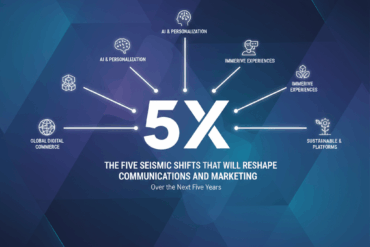Programmatic failed to live up to its promise to be faster, smarter, and better, says Tim Frankcom of Epsilon. Retail media must take note if it’s to meet its full potential.
Programmatic’s promise to simplify processes, minimize ad-spend waste, offer transparency into the locations where ads run, and bring benefits for all parties is still not being delivered. So, if we want retail media to capitalize on its full potential, we must learn from programmatic’s development.
Complexity, a lack of standards, measurement challenges, and platform interoperability all affected programmatic’s development and adoption. Now, as retail media emerges as the new engine of digital advertising, powering performance well beyond retailer ecosystems, we must address these issues early to avoid repeating past mistakes and build something better.
So, what lessons can we take from the rise of programmatic?
First-party gold
While arguing the value of learning from the past to avoid future mistakes, it’s ironic that Google’s decision to abandon its phasing out of third-party cookies seems to fly in the face of this. Precision has always been a fundamental part of programmatic, but its mainstay – cookies – were never built for today’s reality and fail to reflect the complexities of digital advertising. That’s why retail media must focus on adopting alternative future-facing solutions that have been tested and introduced over recent years, rather than fall back on a reliance on third-party cookies.
With their wealth of first-party data, retailers have the gold standard for accuracy and personalization. And while they must develop their retail media offering around this, they must also ensure they remain in charge of their own destinies. With programmatic, this loss of control saw publishers fail to benefit fully from the technology’s arrival.
With all the challenges around reach, match rates, data interoperability, transparency, measurement, and privacy, embracing universal identifiers is essential. Yes, retailers have the crucial first-party data, but adopting IDs allows them to introduce identity-based off-site retail media. While onsite may be the initial focus for retail media, networks are quickly realizing that to deliver more personalization, scale, and ROI, they must reach the right audiences off-site.
Smarter media
Identity-based off-site strategies enable brands to connect with real people wherever they are online. By leveraging first-party data, marketers can match ads to individuals with a high degree of accuracy, ensuring that campaigns reach the intended audience across social, display, and video. This one-to-one approach results in more relevant ads, higher engagement, and improved conversion rates.
For so long, programmatic delivered what was best for the technology rather than the advertiser’s best interests. Now the tide is turning, with granular, product-level insights unlocking more ways for brands to assess ROI and optimize spend. We’re seeing retail media networks increasingly reporting on incrementality to prove sales uplift, showing how campaigns are creating business value and that marketing is having an impact.
However, measurement can’t be one-dimensional; it must reflect all elements an advertiser needs. In the retail environment, there can be an array of objectives that programmatic has not traditionally catered for. For example, a campaign may focus on driving in-store footfall or encouraging people to try a new range, and metrics must be built around these goals.
And when it comes to effective measurement, this calls for standards.
Unlock potential
A major lesson from programmatic’s development is that without standards, you have inefficiency, inconsistency, and complexity. All this creates an environment that’s difficult to navigate and stifles potential.
With each retail media network developing its own processes and approaches, this has implications for adoption and investment. While the channel is undoubtedly seeing tremendous growth, a lack of standards and the fragmentation this brings is deterring nearly 60% of buyers from moving budgets into this area.
That’s why the industry must come together to promote and support new standards that offer the consistency and scale needed for growth, while continuing to enable breadth and complexity.
Developing standards also encourages collaboration, which helps overcome friction associated with new technologies coming to market. Yes, partnership choice is essential, but siloed and fragmented approaches hinder evolution and adoption. Ensuring new platforms and channels can connect and drive the interoperability critical in today’s omnichannel environment is a must. Delivering this will instill confidence in retail media, allowing it to flourish.
Ask questions
When programmatic first exploded onto the scene, there were no rules or guidelines, and few experts. Indeed, in the early stages, there was real ignorance. However, not wanting to come across as uninformed or perhaps blinded by the technology and jargon meant not enough questions were asked, and due diligence was not thoroughly carried out. This was often to the detriment of businesses that invested in technologies that failed to deliver what they needed or soon became redundant.
Now there should be no excuse. People should be confident enough to ask the key questions, so they are informed. Can they deliver the metrics you want? Can they marry online and offline sales? Is their view of identity truly deterministic, or are they just stitching together loose digital IDs? How is attribution defined? Can you understand what’s happening at a SKU level? Can they show you how transparent reporting is?
With over 200 global retail media networks, each with its own usage frameworks, it’s critical to get what you need. And that can only be achieved by asking questions and clarifying.
While faster, smarter, and better may have been the mantra for programmatic, the challenges of implementing it must be recognized and addressed at the outset for retail media. Every emerging approach in digital advertising has its intricacies. However, learning the lessons from programmatic’s past will help minimize issues, speed up adoption, and allow it to reach its full potential quicker.
Feature Image Credit: Li Lin via Unsplash

